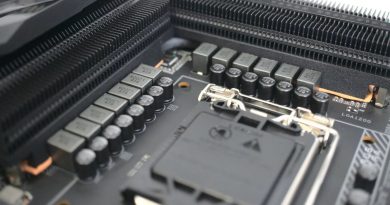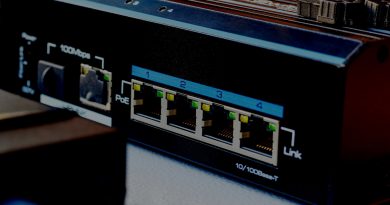Universal robots
You may or may not have heard of collaborative robots or cobots, robots which are designed to work with human input and interaction as part of a mixed production process. They are most at home in industrial applications, but this is far from the only place you will see them used today, with industries as diverse as healthcare, manufacturing and retail all rushing to use this important new technology. Although cobots have few of the disadvantages of their older, single function cousins, there are still important considerations to be made before deciding whether your business is right for cobotisation. By the end of this article, you should have a better idea of how and where cobots can work, and what sort of factors business owners and employees need to be thinking about.
The use of collaborative robots, or “cobots,” in industry is a topic that has been gaining increasing attention in recent years. These robots are designed to work alongside human workers, rather than replacing them, and have the potential to revolutionize the way we think about automation in the workplace. For situations where precision, accuracy and durability are required, but combined with the flexibility and overall control of human workers, collaborative robots are an interesting product that will likely play a larger and larger role in the coming industrial landscape.
One of the main advantages of using cobots in industry is their ability to perform tasks that are dangerous or difficult for human workers. For example, cobots can be used to handle hazardous materials, operate in extreme temperatures, or perform repetitive tasks for long periods of time without getting tired. This not only improves safety for workers, but also increases productivity and efficiency. The difference between traditional industrial robotics and cobots is the level of human collaboration; a robotic arm that can be reprogrammed on the spot by a human colleague is a cobot, but a fully automated car production line involving dozens of machines is not, even if humans are also involved in the assembly and production.
When we think of a robot, we will often assume a highly specialised piece of machinery that carries out one, specific task. In fact, another advantage of cobots is their flexibility. Unlike traditional industrial robots, cobots can easily be reprogrammed or reconfigured to perform different tasks. This allows companies to quickly adapt to changing market conditions or product lines, without having to invest in expensive new equipment. Cobots also have the ability to perform tasks that require a high degree of precision and accuracy. This is especially useful in industries such as manufacturing and assembly, where small errors can result in costly rework or scrap. By working alongside human workers, cobots can help to ensure that products are made to the highest possible quality standards, and their reprogrammable nature allows quick correction of any mistakes and a high degree of customisability.
In addition to the advantages that cobots bring to industry, there are also a number of opportunities that they present. For example, the use of cobots in manufacturing can help to reduce labour costs, increase productivity, and improve product quality. This can give companies a competitive edge in the global marketplace, although the cost of installation has to be balanced against this. Normally installing a cobot will pay itself off in a few years with a decrease in the wage bill, but the jobs that remain working alongside robots may well be higher skilled and more expensive. Many repetitive or physically exhausting tasks have already been automated, but maintenance and repair of existing machinery is often costly and involving; the constant human-robot interaction of collaborative robots involves immediate feedback and cobots are designed to be simply reprogrammable with multiple uses. This means trained staff are always on hand to deal with breakdowns and other problems, resulting in more efficient resource allocation.
Cobots can also be used in service industries, such as healthcare and retail. In healthcare, cobots can be used to perform routine tasks, such as taking vital signs or delivering medication, freeing up human workers to focus on more complex and critical tasks. In retail, cobots can be used to assist customers with product selection, or to perform tasks such as restocking shelves or taking inventory. Labour shortages tend to drive interest in service cobots, which are consistently not preferred by human customers. Many fast food restaurants have adopted a dual screen / server model where the initial order is now placed on a computer and the order is handed over by a human, a primitive example of the same principle that is used in human / robot collaborative manufacturing.
Another opportunity that cobots present is the ability to perform tasks that are currently difficult or impossible for humans. For example, cobots can be used to explore extreme environments, such as deep-sea oil rigs or space stations. They can also be used to perform tasks that are physically demanding or require a high degree of dexterity, such as microsurgery. In the former example, full human-robot collaboration is less likely, as this would defeat the point of using a robot to carry out the dangerous task, but certainly where surgery is concerned, close interaction between human and robotic agents is an important feature.
Despite the many advantages and opportunities that cobots present, there are also some concerns that need to be addressed. One concern is the potential for cobots to take away jobs from human workers. However, it is important to note that cobots are designed to work alongside human workers, rather than replacing them, although they will of course impact the percentage of tasks carried out by robots as opposed to humans, and the nature of roles working with them will change. At the level of the individual company or factory this is probably not a concern; reducing the wage bill will benefit the business provided sufficient trained and competent staff remain who understand the process itself.
Another concern is the potential for cobots to malfunction or malfunction in a way that can harm human workers. This is why it is important to ensure that cobots are designed, programmed, and maintained properly, and that appropriate safety measures are in place to protect human workers. Careful processes should be in place to ensure humans do not needlessly expose themselves to risk, in much the same way as health and safety legislation already exists in industry. Some environments and industries mean it is difficult for humans to operate without significant protective equipment, or even at all in some areas. Here robots require additional safety features and fail-safe locks as it will take longer for human operators to identify any malfunctions.
Cobots present an interesting opportunity for a huge range of industries, especially in manufacturing and research but also in more unexpected places such as food service, personal care and even education. Interest in cobots is growing, but it remains to be seen how prevalent they will become in the industrial landscape of the future. Hopefully after reading this article you are familiar with the difference between traditional robots and collaborative robots; cobots tend to be cheaper, more versatile, more geared towards human – robot interaction and have a lower ongoing maintenance cost.




